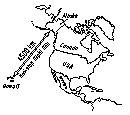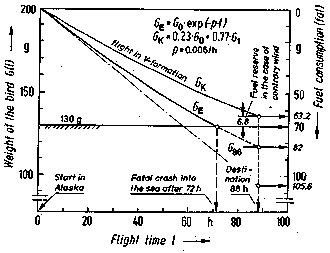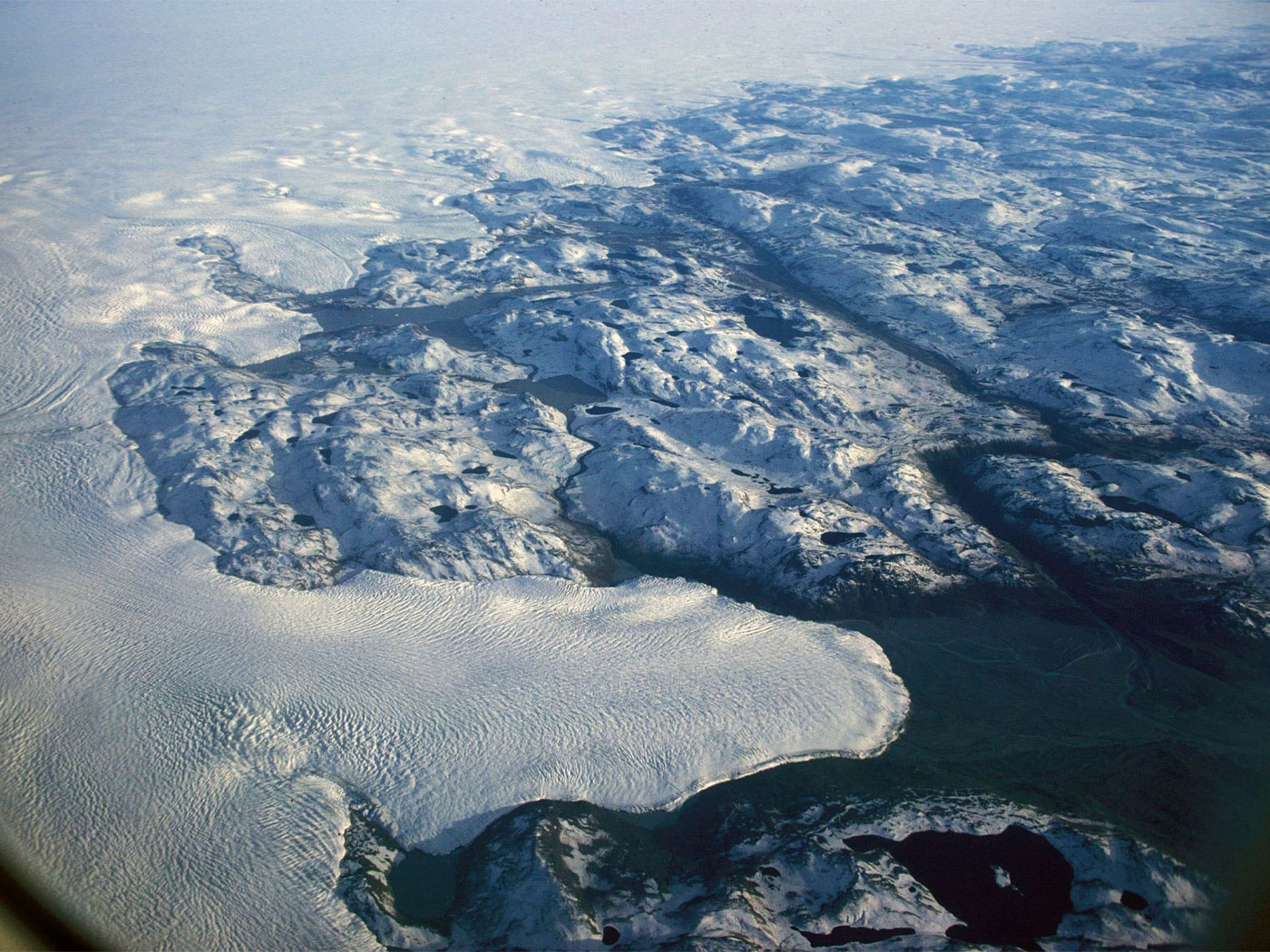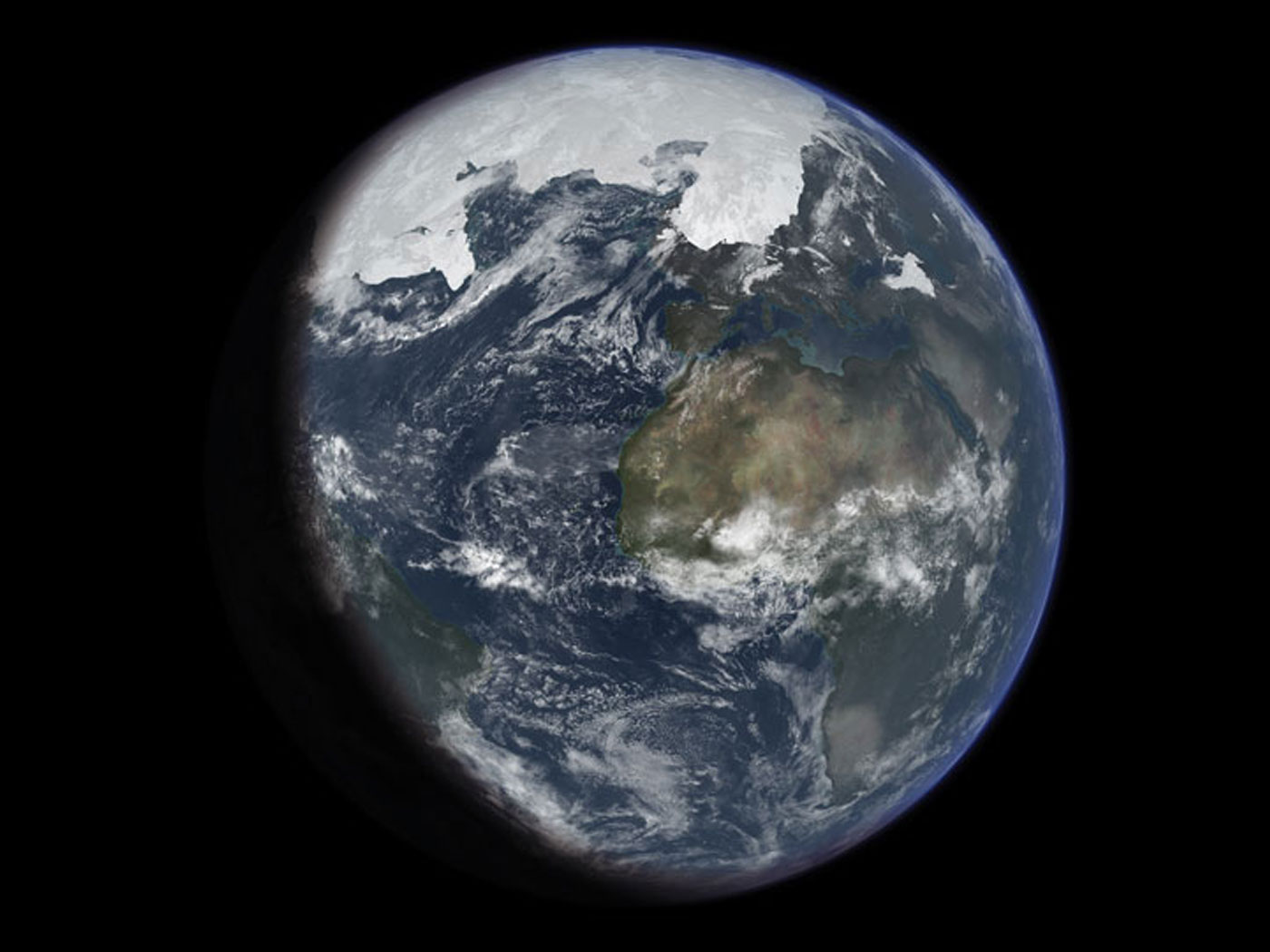The Bible reveals to us various principles which God used in the creation through the Word; by will; from nothing (ex nihilo); spontaneously; through JESUS CHRIST. Let us examine one aspect, which is spoken of in Psalm 104:24. "O Lord, how manifold are thy works! In wisdom thou hast made them all: the earth is full of thy riches." We encounter these works, so wisely conceived, at every turn. We shall consider just one particular example here, and that is the flight of migratory birds. 1, 2, 3 If we take a closer look at this phenomenon, we encounter two miracles: energy and navigation.
The miracle of energy
Every process, whether in physics, technology or biology, adheres strictly to the law of conservation of energy; that is to say, any work to be done requires a certain amount of energy supplied. The problem facing the migratory bird is that of taking with it sufficient fuel (= fat) to complete its journey. To ensure the necessary flying capacity, the bird must be of as light a build as possible. Excess weight is to be avoided at all costs. Likewise, use of fuel has to be as efficient as possible. How, then, did the Creator make the fuel last so long without refilling? The first step is choosing the most economical cruising speed. Should the bird fly too slowly, it would consume too much fuel simply to stay airborne. If it flies too quickly, it wastes too much energy in overcoming air resistance. Thus we see that there is a definite minimum for the consumption of fuel. If the bird knew about this speed, it would be able to fly as efficiently as possible. Depending on the aerodynamic construction of the rump and wings, the optimal speed is different for each bird (e.g. laughing gull 45 kilometers per hour, budgerigar 41.6 km/h). It is a known fact that birds gear themselves exactly to this energy-saving speed. How do they know? It is one of many unsolved ornithological puzzles.
We want to examine more closely the energy problem of the golden plover (Pluvialis dominica fulva). This bird migrates from Alaska to Hawaii for the winter. Its nonstop flight takes it across the open sea where there is no island en route; in addition, the bird cannot swim, so that a stop for rest is impossible. This flight of over 4000 km (depending on its starting point) involves an incredible 250,000 consecutive wing beats and lasts 88 hours. The bird's starting weight is G0 = 200 grams, of which 70 grams are stored as layers of fat to be used as fuel. It is known that the golden plover converts 0.6% per hour of its current body weight (p= 0.006/h) into kinetic energy and heat1. For the first hour of flight, it therefore needs
x1 = G0 p = 200 (0.006) = 1.2 grams of fat.
Thus, at the beginning of the second hour, it weighs only
G0 x1 = 200 - 1.2 = 198.8 g, so that it uses slightly less fat for the second hour:
x2 = (G0 - x1) p = G1 (p) = (198.8) (0.006) = 1.193 g
x3 = (G0 - x1 - x2) = G2 (p) = (197.6) (0.006) = 1.186 g
and for the 88th hour of flight the fuel consumption has fallen to
x88 = (G0 - x1 - x2 - x3 . . . x87) p = G87 (p)
Now we will calculate how much the bird weighs at the end of the flight. Its body weight at the end of each hour is given by the reduction due to the fat consumption:
1st hour: G1 = G0 - x1 = G0 - G0 p = G0 (1 - p)
2nd hour: G2 = G1 - x2 = G1 - G1 p = G1 (1 - p) = G0 (1 - p)2
3rd hour: G3 = G2 - x3 = G2 - G2 p = G2 (1 - p) = G0 (1 - p)3
and so on. Finally at the 88th hr: G88 = G0 (1 - p)88
For the sake of simplicity, we have performed the above calculation in steps of 1 hour. We could have used a more accurate differential equation, but the result would have differed only negligibly from the above solution. Using the simpler method, and putting in the proper values in Equation (8), the bird's weight after the 88th hour is given by
G88 = 200 (1 - 0.006)88 = 117.8 grams.
The total fuel consumption is then the difference from the initial weight:
G0 - G88 = 200 -117.8 = 82.2 grams.
This value is distinctly more than the available 70 grams! The bird may not go below the limit of 130 g (Fig. 1). In spite of flying at the speed which minimizes his fuel consumption, the bird has not enough fuel to reach Hawaii. To find the number of hours that the fuel is sufficient for, we find using GZ = G0 (1 - p)Z = 200 - 70 = 130 g that the 70 g of fat are used up after Z = 72 hours, which means that after 81% of the projected time (i.e. a good 800 km before the end) the bird crashes into the sea. Have we miscalculated, or has the Creator not, as we thought, designed and equipped the bird properly? Neither: the Creator's work leaves us amazed. The clue is the motto: "optimal use of energy through information." He gave the bird an important piece of information as well: "Do not fly singly (curve GE) but in V-formation (curve GK). In V-formation you will save 23% of your energy and reach your winter quarters safely." Fig. 1 also shows the curve GK, the rate of weight loss when flying in V-formation. After 88 hours this would normally leave 6.8 g of fat in hand. This remaining fuel reserve is not superfluous, however, but has been included by the Creator so that the bird reaches its goal even with a contrary wind. The extremely low fuel consumption of p = 0.6% of the total weight per hour is even more astonishing when one considers that the corresponding values for man-made mechanical flying machines are many times larger (helicopter p = 4 to 5%, jet p = 12%). For anyone who does not regard these finely adjusted processes as the work of a Creator, the following questions remain unanswered:
- How does the bird know how much fat is necessary?
- How does it arrange to have this amount just before the journey?
- How does the bird know the distance and the specific rate of fuel consumption?
- How does the bird know the way?
- How does it navigate?


Fig. 1: Illustration of the flight of the golden plover from Alaska to Hawaii (geographical route, curves of the fuel consumption during the bird's flight).
As well as the aforementioned (East Siberian) golden plover, there is also the North American golden plover. This bird also flies in a dazzling nonstop performance straight across the Atlantic Ocean from the coasts of Labrador to North Brazil. Whereas the western breed flies the same course for both journeys, the North American golden plover chooses different routes for Autumn and Spring. The return flight from the pampas of South America crosses Central America and the United States to Canada. The following equally incredible flight performances are recorded for:
- the Japanese snipe (Capella hardtwickii): 5,000 km flight from Japan to Tasmania
- the needle-tailed swift of Eastern Siberia (Chaetura caudacuta): flight from Siberia to Tasmania
- the American sandpipers (e.g. Calidris melanotos = pectoral sandpiper): 16,000 km flight from Alaska to Tierra del Fuego.
The navigational miracle
The famous Danish ornithologist, Finn Salomonsen, has this to say about a bird's orientation during migration 3: "The bird's ability to find its way during migration is surely the greatest mystery. Seldom has another question given so much cause for theorizing and speculation as this one." Indeed, this navigational achievement, performed without complex boards of instruments, compass and map and under constantly changing conditions, including sun position, wind direction, cloud cover and the diurnal cycle is an incomparable miracle. Even a slight diversion off course whilst crossing the ocean would mean certain death in the open sea for migrating land birds, as we discovered in the case of the golden plover. Keeping exactly on course is not a question of trial and error. The vast majority of migrating birds would never reach their destination without navigational methods, and no species could survive such an overwhelming loss rate; thus any suggestion that evolution has played a part here must be totally dismissed. Also the suggestion that young birds learn the way flying with their parents carries little weight, as many species fly solo. It is thought, then, that migratory birds have an instinctive sense of direction like a compass, which makes it possible for them to orientate themselves and thus keep flying in a certain direction. Salomonsen bases his theory about the sense of direction on his study of two kinds of small birds from West Greenland, both of which fly south in autumn. The stonechat(Saxicola torquata) and the snow bunting (Plectrophenox nivalis) share a common homeground and often begin their southward journey at the same time. Once the south of Greenland is reached, however, their ways separate: whereas the snow bunting continues his journey southward to winter in America, the stonechat turns southeast to follow a course over the Atlantic to Western Europe and North Africa. Each bird has a specific sense of direction which determines its migration pattern. Displacement experiments have been carried out with various migratory birds which showed detailed results about the precision of their navigational capabilities: a most remarkable test involving two species of tern (Sterna fuscata and Anous stolidus) and their nesting places in the Tortugas Islands in the Gulf of Mexico, was one such experiment. The birds were shipped in different directions and set free on the open sea. Although they were freed at distances ranging from 832 to 1368 km from their nests over parts of the sea which were completely unfamiliar to them, within a few days, most of the terns returned almost directly to their eggs and young on the Tortugas Islands. The longest disorientation experiment carried out to date was probably one involving a manx shearwater (Peffinus puffinus) which was taken from its nest on Skokholm Island in Wales to Boston, USA. It arrived back at its nest in 12 days, 12 hours and 31 minutes after a 5,000 km nonstop transatlantic flight. A large number of disorientation experiments has been carried out on homing pigeons, in particular, and it is their navigational achievements which have been most thoroughly researched and documented. Salomonsen, writing about this breathtaking navigational feat, says 3:
"Even when birds were anaesthetised for the outward journey, or if their cages were made to rotate continuously so that their orientation was constantly changing, they were just as able to find their way home as were the control birds. Therefore there can be no doubt that birds have a special sense of geographical position, i.e. a real navigational sense. The nature of this instinct remains a mystery; even more so, the location of the relevant sense organ."
The birds' capabilities extend beyond the bounds of our imagination. They can determine their homeward course over long distances, even when all possible aids to orientation have been removed during the disorientation journey. They possess the extraordinary faculty of being able, wherever they are, to determine their position relative to their home territory from their immediate surroundings. And this method of determining location, itself not understood even today, is only the beginning; then comes the real problem, namely flight navigation: mere sense of direction is not enough for this.
During flight over wide, windswept stretches of ocean, a tendency to drift off course cannot be avoided. Such drift must be continually compensated for, as in a feedback system in control technology, in order to avoid losing energy by flying a longer route. The Creator equipped the birds with a precise 'autopilot,' which apparently is constantly measuring its geographical position and comparing the data with its individually "programmed" destination. In this way an economical, energy-saving and direct flight is guaranteed. Just where this vital system is to be found and how this operating information is coded is known by no one today except the Creator, who made it.
1 Droscher, V.B.: Oberlebensiormel dtb-Taschenbuch, 2. Auflage 1982, 329 S. Vogelflug
2 Ruppell, G.: Rowohlt Taschenbuch Verlag GmbH, 1980, 209 S. Vogelzug
3 Salomonsen, F.: Aus der Serie: Moderne Biologie BLV Munchen. Basel, Wien, 1969, 210 S.
* Prof. Dr.-Ing. Werner Gitt is Director and Professor, Physikalisch-Technische Bundesanstalt, in Braunschweig (Germany)






